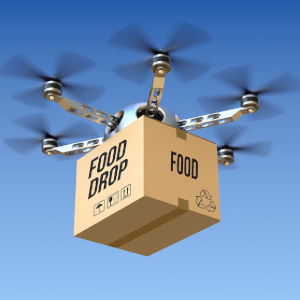Street Food has a long and delicious history stretching back to ancient times. It’s had its place in virtually all great cultures that have risen and fallen since Ancient Greece. And with it, the tradition of street-side stalls, carts and, most recently, autonomous rolling kitchens we simply call ‘Food Trucks’…
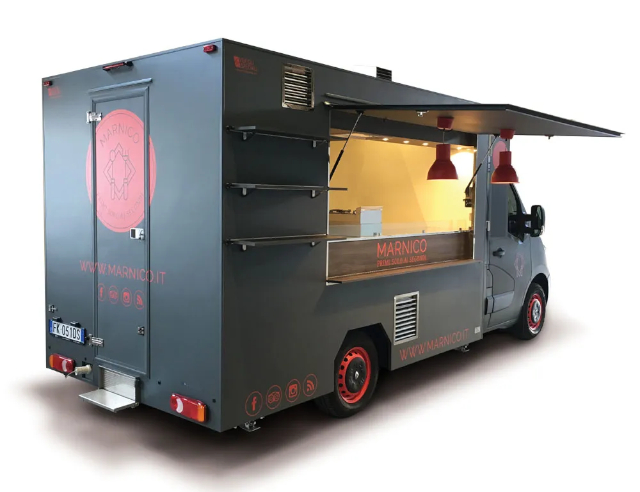 A modern, purpose-built high-tech food truck. Converted delivery vans just don’t cut it any more…
A modern, purpose-built high-tech food truck. Converted delivery vans just don’t cut it any more…
Some of the earliest documented mentions of Street Food sales come from ancient Greece, where folks on their way to wherever they were hustling could grab a handful of small fried fish to tide themselves over until their next official meal.
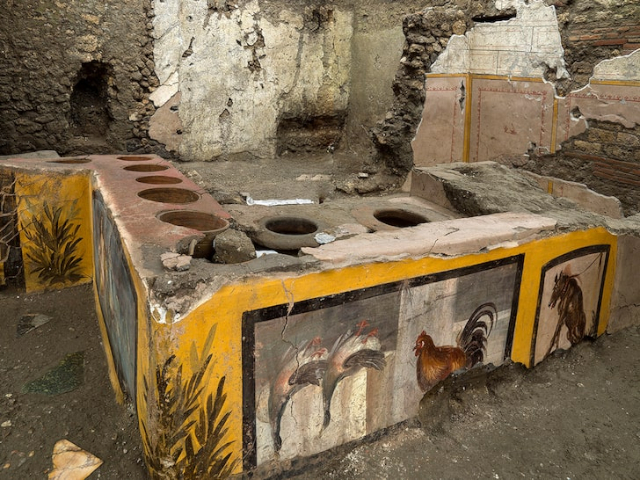 A Pompeii street-side snack bar c. 79 AD / CE…
A Pompeii street-side snack bar c. 79 AD / CE…
At the height of ancient Rome, the people of Pompeii (and, we assume, the other major centres of the empire) could stop for a snack on their way to work at any number of street-side open-air cafés featuring such delicacies as duck, goat, pork, fish and snails. This sterling example survived the momentous eruption of Mount Vesuvius in 79 AD/CE, and was just recently rediscovered by archeologists.
Next up, historically, were rough stalls of a type still common in many parts of the world, where local folks sell local favourites – usually single-dish themed – that can be picked up and carried away with or without some sort of wrapper. In some places, the stalls got wheels and became push carts. The ingredients and dishes span the entire panorama of food across continents and ages. But they all have one thing in common: The food comes to you, and not the other way around, like it does when you go to a restaurant.
Refinements first noted relatively recently
The first record of what today has evolved into the ubiquitous Food Truck comes in 1866, courtesy of a standout character of the old west: A rancher names Charles Goodnight, hailed by some as ‘The Father of the Texas Panhandle’. Dana Crook gives us a colourful account in her History of the Food Truck:
“It’s been claimed that he’s the best-known rancher in Texas. He was a colorful character. It was once common knowledge that he smoked over 50 cigars a day and at 91 years young, he married his 26-year-old nurse. While all this is true, there is one particular legacy he left behind that has influenced the hospitality industry today: he invented the original food truck, the chuck wagon.”
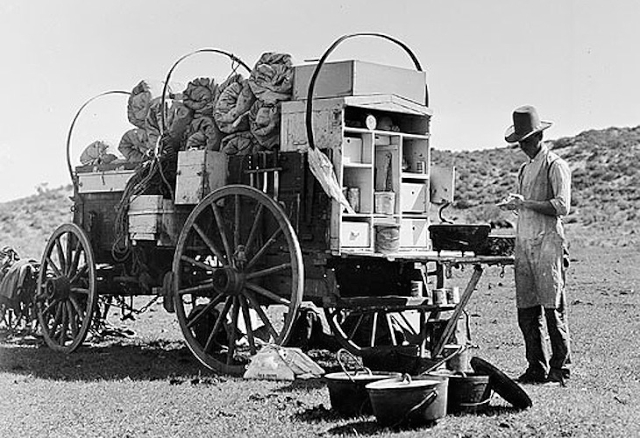 A genuine Goodnight chuck wagon. Everything you needed
A genuine Goodnight chuck wagon. Everything you needed
to get from Pasture ‘A’ to Pasture ‘B’…
Starting with a surplus U.S. Army supply wagon, he outfitted it with shelves, a storage cabinet with a hinged lid for counter space, a water barrel and even a canvas sling to haul firewood. The food he brought along was either preserved – think dried beans, salted meat, flour, corn meal – or gathered as he went along. The idea was simply to provision a gang of cow punchers from one pasture to the next on a cattle drive.
Imitation the sincerest form of flattery
As Goodnight’s fame with the chuck wagon spread, others quickly capitalized on the idea. One was Walter Scott of Providence, RI, who set up a chuck wagon with windows cut into the side canvases outside the local newspaper office selling pie and coffee to the legion of reporters who were always coming and going.
By 1894, records show that street-side sausage vendors were turning up at the campuses of at all the Ivy League universities.
Then, in 1916, Polish immigrant Nathan Handwerker launched the first hot dog cart (as we know it) from his stand on Coney Island. He had been working for another sausage maker but thought he could do better. So he and his wife appropriated his mother-in-law’s recipe and produced the first ‘modern hot dog’.
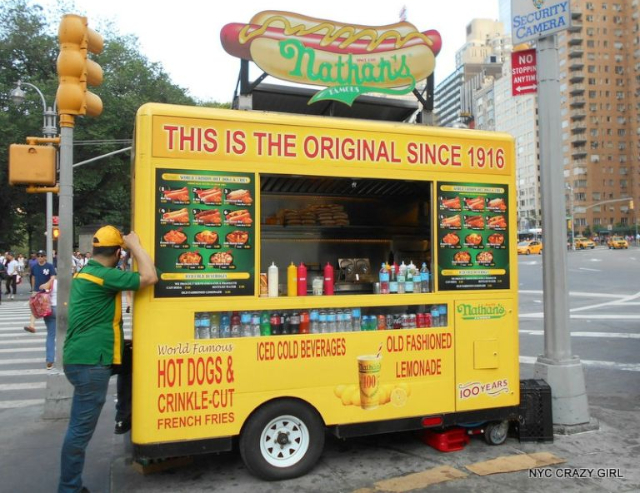 Today’s version of the Nathan’s Famous Hot Dog Cart: Now, they have Food Trucks, too!
Today’s version of the Nathan’s Famous Hot Dog Cart: Now, they have Food Trucks, too!
Within a few years, he had hundreds of men with push carts on the streets of New York. Vendors of other classic street treats quickly followed his example, and by the mid 20th century food push carts were everywhere, offering everything from pretzels to bagels to roasted chestnuts.
Thus did the push cart evolve, in parallel with the chuck wagon. For a while, anyway.
The War a watershed
After the Second World War, a new phenomenon arose. Ice Cream vendors added bicycle tires and pedals to their carts. And before long, they were converting delivery vans into ice cream trucks.
In the 1960s, so-called sandwich trucks began to appear, usually staking out catering routes covering a string of construction sites, where perpetually-hungry hard-labourers were always happy to see them. These vehicles were initially modestly billed as ‘Coffee Services’, but quickly evolved into full-service lunch trucks.
 A classic ‘Coffee Service’ at the height of the craze…
A classic ‘Coffee Service’ at the height of the craze…
In my youth, when I was just starting out as a working adult, we affectionately – ironically – referred to them as ‘Crap Trucks’.
It was a short step from there to today’s fully-equipped Food Trucks, within which a selection of take-away dishes (usually defined by certain cultural or culinary traditions) are both prepared and sold. In most large modern cities, you can find almost any kind of food you might crave – on a truck parked somewhere along a busy street.
FT: TNG
Which brings us to Food Trucks: The Next Generation. And guess what they are?
If you guessed Food Delivery services, you’d be right. Not exactly rolling, roving kitchens like the food trucks we’re interested in, but a system for making a wide variety of foods accessible and bringing them to you – giving the food wheels.
What next? We’ve already seen delivery services experimenting with flying drones (see photo, top of page) and rolling ‘deliverobots’. Just like Doc told Marty at the end of Back To The Future, “Where we’re going, they don’t need roads!”
~ Maggie J.

